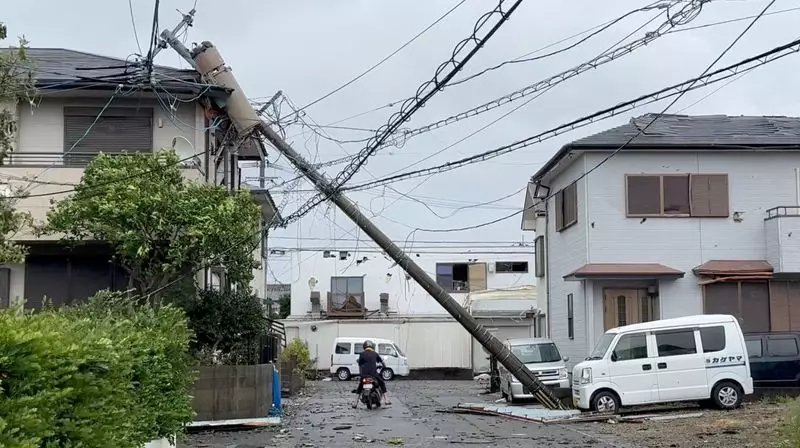Typhoon Shanshan wreaked havoc across large parts of Japan, bringing torrential rain that led to warnings of flooding and landslides hundreds of miles away from the storm’s center. The southwest region of Kyushu bore the brunt of the storm, with authorities describing it as potentially one of the strongest storms to hit the area. In Fukuoka city, residents were forced to stay indoors, with streets deserted and shops closed due to the severe weather conditions.
University student Kokoro Osoegawa, 21, found herself stranded at a rain-lashed shopping mall in Fukuoka city, unable to find transportation due to the halted train services. This experience highlighted the unprecedented nature of the situation, with Osoegawa expressing her surprise at the complete stoppage of all trains in the region. The disruption caused by Typhoon Shanshan resulted in significant challenges for the local population, affecting both daily routines and emergency response efforts.
The impact of Typhoon Shanshan was not limited to property damage and infrastructure disruptions. Tragically, at least three people lost their lives and 78 others sustained injuries in storm-related incidents in recent days. The toll on human lives underscored the seriousness of the situation and the urgent need for coordinated disaster management efforts. The storm brought powerful gusts of wind, reaching speeds of up to 180 km per hour, causing significant damage to structures and vehicles in its path.
As the typhoon continued its trajectory towards the northeast, authorities issued warnings to over 4 million people across the country, signaling the potential for further evacuations and safety concerns. The widespread impact of Typhoon Shanshan highlighted the vulnerability of communities to extreme weather events and the need for robust preparedness measures to mitigate risks and protect lives.
In addition to the human cost, Typhoon Shanshan had severe implications for Japan’s economy, with major factories forced to suspend operations due to the adverse weather conditions. Automakers such as Toyota, Nissan, and Honda halted production in their domestic plants, while semiconductor firms and electronics manufacturers also experienced disruptions. The storm’s impact rippled across various industries, leading to cancellations of hundreds of flights by airlines and the suspension of ferry and rail services.
Tourists, like Lin Yue-Hua from Taiwan, faced uncertainty and logistical challenges as their travel plans were upended by the typhoon. Yue-Hua’s experience reflected the widespread disruptions caused by Typhoon Shanshan, with many travelers stranded or facing delays in their journeys. The economic ramifications of the storm extended beyond the immediate damage, affecting supply chains, transportation networks, and tourism revenues.
Typhoon Shanshan served as a stark reminder of the destructive power of natural disasters and the importance of proactive planning and response mechanisms to mitigate their impact. The need for effective communication, evacuation procedures, and infrastructure resilience was evident in the face of such extreme weather events. The ripples of Typhoon Shanshan reverberated through society, prompting reflection on vulnerabilities and opportunities for improvement in disaster preparedness.
As Japan continues to grapple with the aftermath of Typhoon Shanshan and other harsh weather systems, the lessons learned from these experiences will be crucial in enhancing resilience and safeguarding communities against future threats. The collaborative efforts of government agencies, businesses, and individuals in responding to such crises will be fundamental in building a more resilient and secure future for all.

